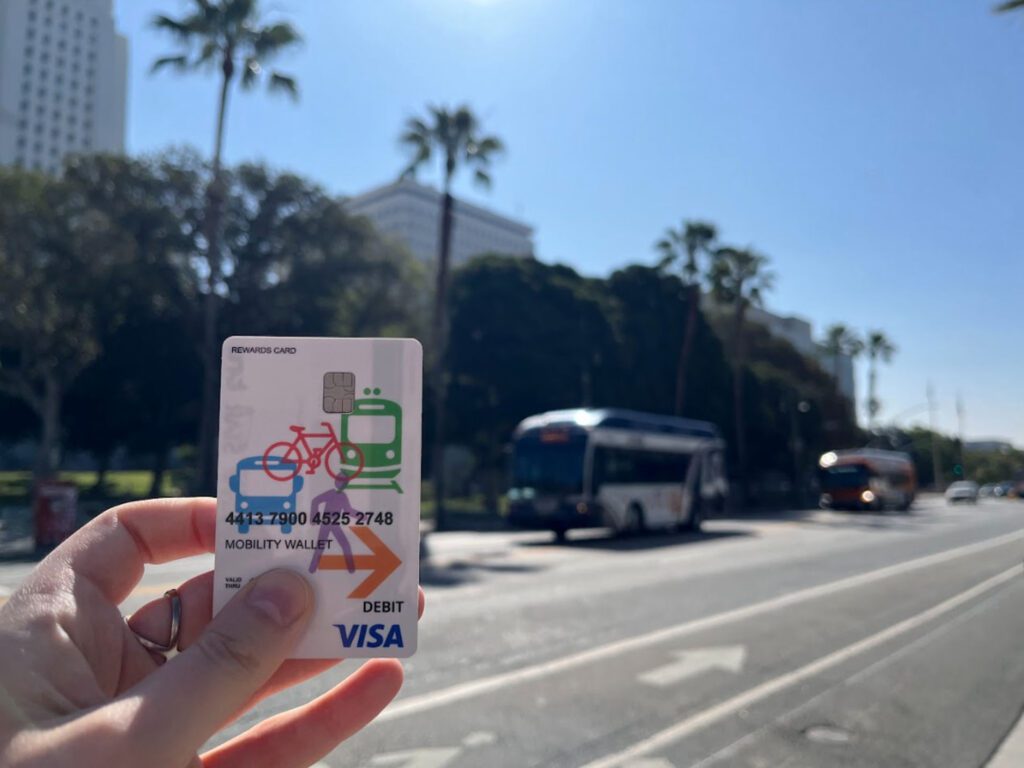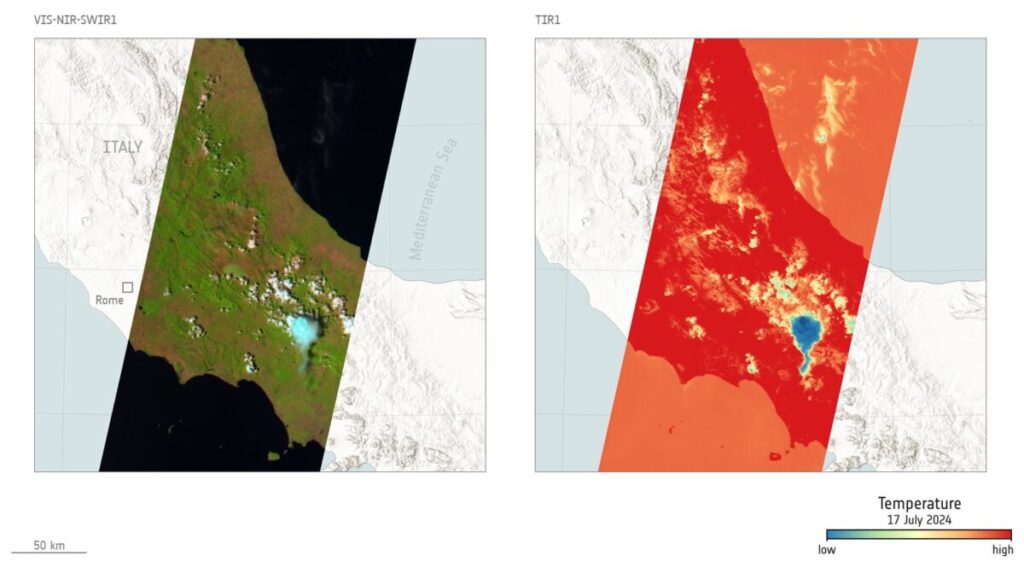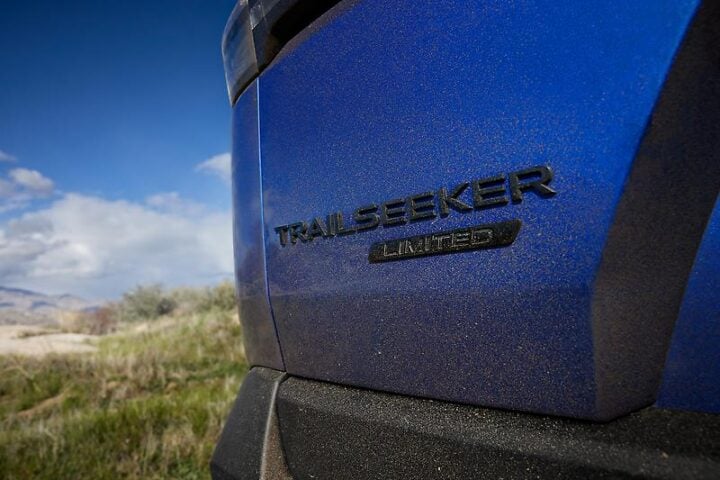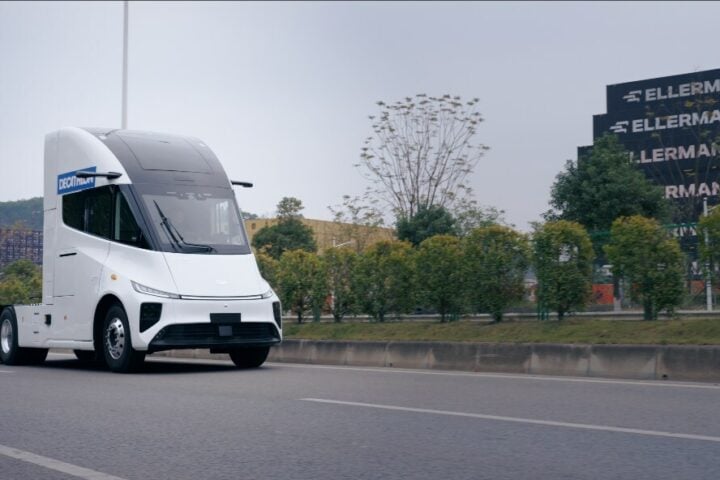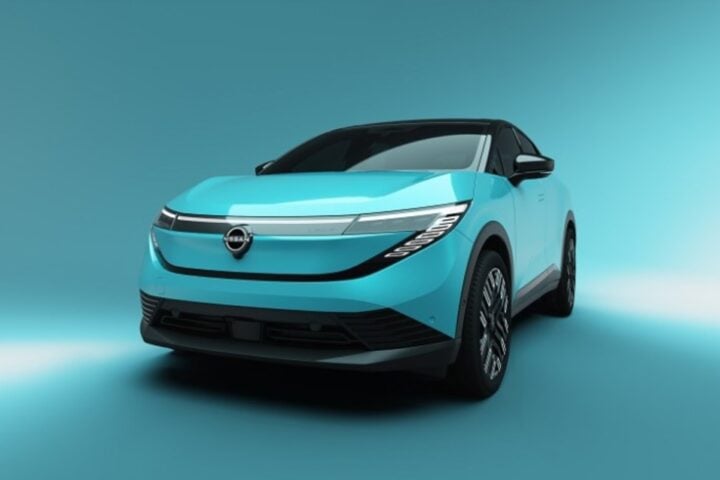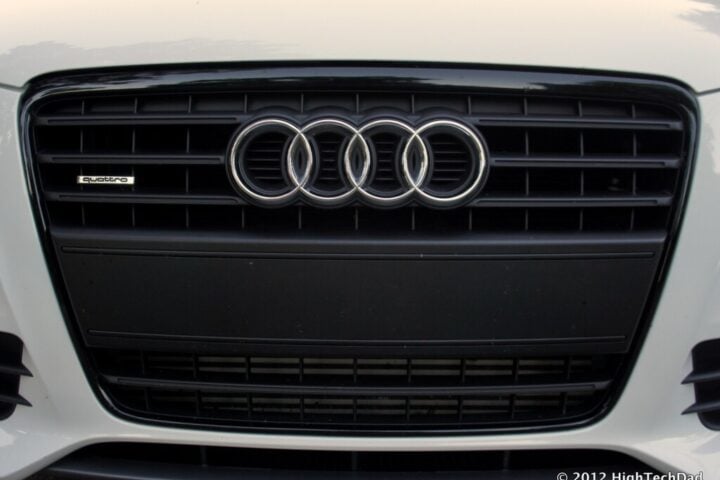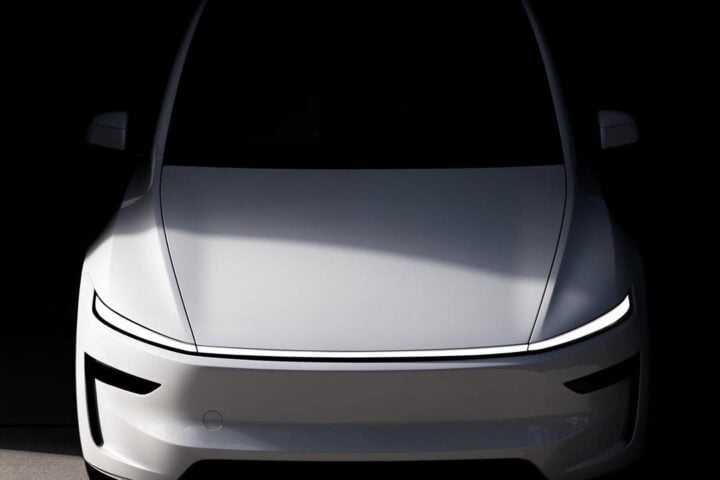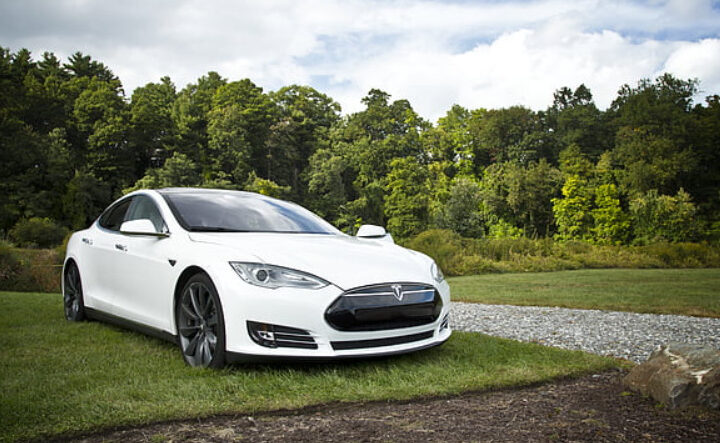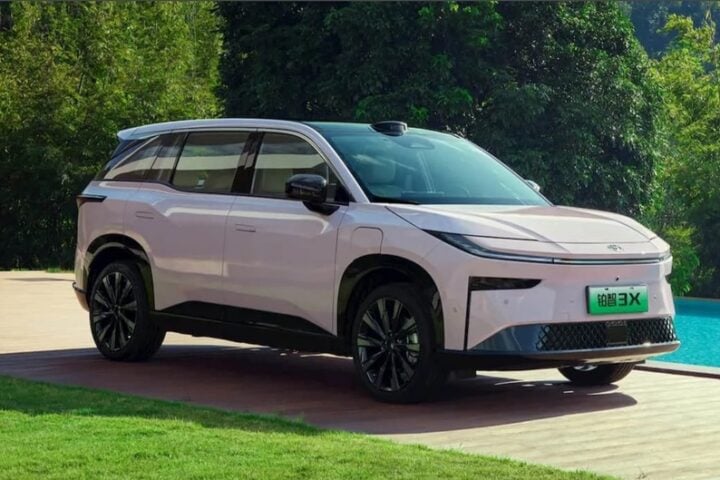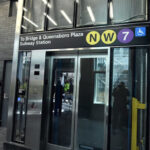The Los Angeles Department of Transportation (LADOT) and the Los Angeles County Metropolitan Transportation Authority (Metro) are expanding the Universal Basic Mobility (UBM) pilot with Phase II of the Mobility Wallet program. The Mobility Wallet is the largest of its kind in the country and addresses the systemic barriers to safe, efficient, and reliable transportation faced by low-income Angelenos.
Mobility Wallets provide subsidies that can be used for transportation services including public transit, rideshare, micromobility, taxis, and bike shops. Phase I of the program ran from May 2023 to April 2024 and provided 1,000 low-income residents in the South LA UBM pilot area a prepaid debit card with $150/month to use for transportation needs. During each month of Phase I, participants spent over $1.36 million total, with the most popular types of trips being 140,000 bus and rail trips, 60,700 trips via ride hail/taxi/access services, 80,800 trips via public transit (Bus/Rail), 2,600 trips via shared scooters and bikes, and 169 bike shop purchases.

Phase II of the Mobility Wallet program will select 1,000 new low-income residents within the South LA pilot area and 1,000 low-income residents across LA County to receive the Mobility Wallet subsidy. In Phase II, participants will receive a $900 debit card in the fall and a $900 refill six months later. 1,000 will be from South LA and 1,000 from other areas of LA County. Applications are open now and will be open until August 31, 2024, and participants will get up to $1,800 to spend on public or private transportation.
Candidates must be 18 years of age, residents of Los Angeles County, and ineligible from Phase I to be considered for Phase II. Based on Metro’s LIFE (Low Income Fare is Easy) program, the yearly household income minimum is set. Applications are being accepted by Metro for a program that will provide 2,000 Angelenos with $1,800 to spend on transportation expenses. The one-person household need is $44,100 or less; the two-person household requirement is $50,400 or less; the three-person household requirement is $56,700 or less; the four-person household requirement is $63,000 or less; the five-person household requirement is $68,100 or less; and the six-person household requirement is $73,100 or less.
Phase I was a hit with participants who loved the flexibility and said it made it easier to get to work, school, doctor’s appointments, and to explore LA. 70,800 of the trips paid for by participants were via public transit. The second most popular was ride hail/taxi/access services with 60,700 trips. Participants also took 2,200 trips via shared scooters and bikes and 169 bike shop purchases. Metro is working to iron out the kinks from Phase I including ride-hailing services’ pre-authorization holds, clarifying eligible merchants, and locked prepaid debit cards. The change to twice-yearly fund distribution is supposed to help with some of those issues. Phase II will also include Apple/Google Pay, text message alerts, and email reminders to encourage participants to check their balances and prevent account locks.
The Mobility Wallet is part of a $30 million Universal Basic Mobility pilot program launched by the City of Los Angeles in 2021 to provide various mobility options to increase mobility, access to opportunity, and transportation equity in South LA. The Mobility Wallet Phase II is funded by the City of LA and a grant from the California Air Resources Board’s Sustainable Transportation Equity Project awarded to the City of LA in 2021 and by a Southern California Association of Governments grant awarded to Metro in 2024. The pilot is part of the larger Universal Basic Mobility program led by the City of Los Angeles to provide transportation options and a minimum level of mobility to all members of society regardless of age, ability, location, and socioeconomic status. The program is funded by a California Air Resources Board grant through the City of Los Angeles and a Regional Early Action Planning 2.0 grant by the Southern California Association of Governments.
Similar Posts
“LADOT is excited to continue advancing mobility equity with the next round of Mobility Wallets as part of our Universal Basic Mobility pilot program,” said LADOT GM Laura Rubio-Cornejo. “Mobility Wallets let people choose the transportation that works best for them. We’re doubling participation in South LA — LADOT’s UBM pilot area — and expanding this to all county residents.” Organizers will try to get a representative sample and zero in on differences between users in transit-rich areas versus transit deserts, Metro said. The first phase of the program gave 1,000 South LA residents $150 a month for 12 months starting in May 2023. That area is a federal transit empowerment zone — an area that needs more transportation. Plus, Metro says it has a high percentage of low-income people who are also dependent on transit. The program is to help that population. The pilot is also testing an open-loop system for fare collection, where riders can use a debit or credit card to tap on a bus or train. Similar systems are used in New York and San Francisco.
Metro worked with the city of Los Angeles’ Department of Transportation on the program. In the first phase, Mobility Wallet was funded by $2 million from a larger $13.8 million State Trade and Expansion Grant and $2 million from L.A. City. In this phase, Metro got a $4 million grant from the Southern California Association of Governments.
